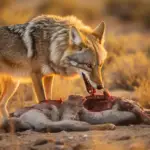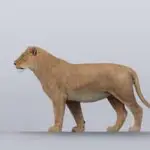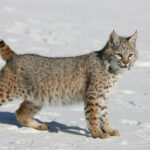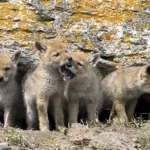Where Do Coyotes Go During the Day? Let’s sort this out!
Coyotes, fascinating creatures of the wild, have long captured the imagination of nature enthusiasts and wildlife observers.
Found throughout North America, these intelligent canids are known for their adaptability and cunning nature.
When we think of coyotes, the image of a stealthy predator prowling under the cover of darkness often comes to mind. Indeed, the common perception is that coyotes are primarily nocturnal animals.
However, is this notion entirely accurate? In this article, we will delve into the intriguing topic of a coyotes daytime adventures!
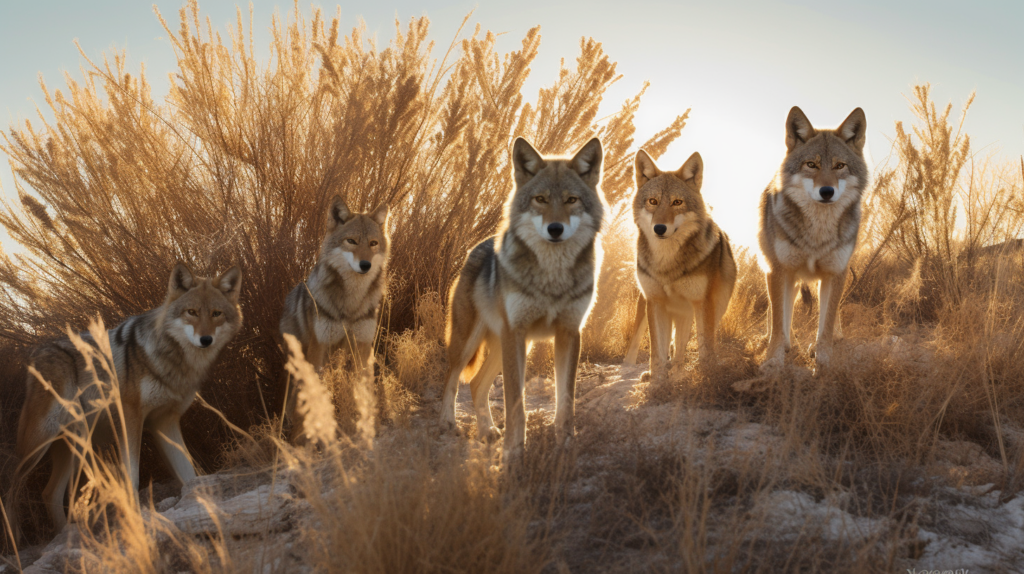
Are Coyotes Nocturnal?
To answer this question, it’s important to understand the concept of nocturnality in animals. Nocturnal animals are those that exhibit heightened activity during the night while remaining relatively inactive during daylight hours.
This behavioral adaptation allows them to avoid the intense heat and potential predators, and take advantage of the cover of darkness for hunting.
When it comes to coyotes, the categorization of their activity patterns as strictly nocturnal may not be entirely accurate.
While they do exhibit increased activity during the night, they are not strictly bound to the darkness. Scientific research has shed light on the nuanced behavior of coyotes, revealing a more complex picture.
Numerous studies have observed coyote behavior patterns, and the evidence suggests that they are crepuscular animals.
Crepuscular species are most active during the twilight hours of dawn and dusk, maximizing their opportunities for successful hunting while avoiding the extreme temperatures and potential dangers associated with the middle of the day or the darkest hours of the night.
Coyotes, being adaptable creatures, can also display flexible behavior depending on various factors such as human activity, food availability, and environmental conditions.
This adaptability allows them to adjust their activity patterns as needed, making them a highly successful species in diverse habitats.
In the next section, we will delve deeper into the comparison of coyote behavior during the day and night, exploring the factors that influence their activity patterns.
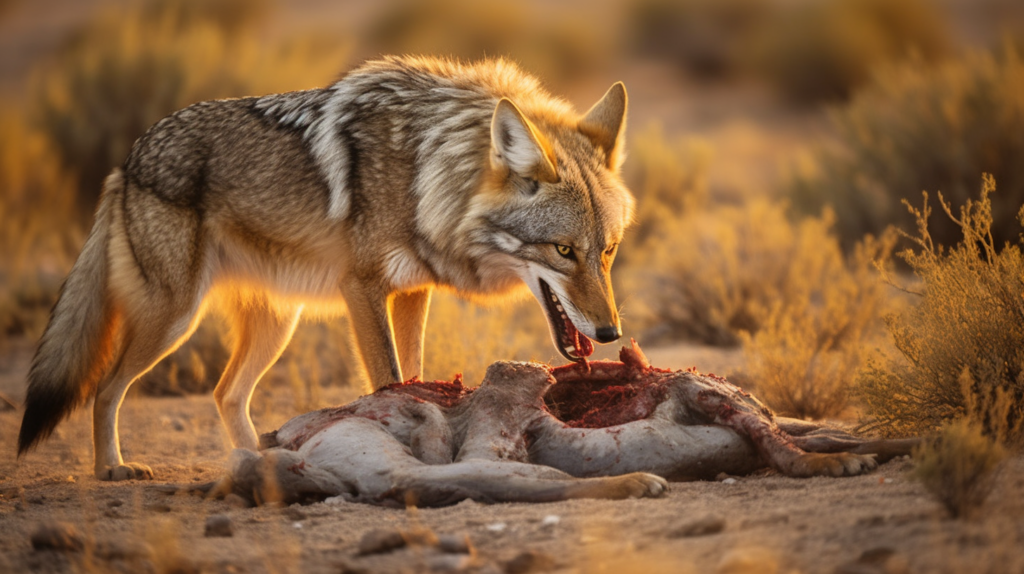
Coyote Behavior: Day vs. Night
Understanding the differences in coyote behavior during the day and night is crucial to unraveling the mysteries of their daily routines.
While coyotes are often associated with nocturnal activity, they also exhibit notable behavior patterns during daylight hours. Let’s explore the intriguing dynamics between their day and night activities.
During the day, coyotes generally reduce their overall activity levels. They tend to seek shelter in dens, which are typically located in secluded areas such as dense vegetation, brush piles, rocky crevices, or underground burrows.
These dens provide them with a safe and secure refuge from potential threats and the scorching sun. Coyotes may also retreat to shaded areas like thickets, forests, or even the cool shade beneath human structures like sheds or decks.
In contrast, as twilight approaches, coyotes become more active and start preparing for their primary hunting time—dusk and dawn.
This crepuscular behavior allows them to take advantage of lower light levels while avoiding the extreme conditions associated with broad daylight or the cover of darkness.
Various factors influence the behavior of coyotes, including human activity, food availability, and environmental conditions.
Human presence and disturbance can significantly impact their behavior, causing them to become more elusive and retreat to quieter areas.
Urban environments may force coyotes to adjust their behavior, becoming more nocturnal or adapting their hunting grounds to suburban landscapes where food sources like rodents and small mammals are more abundant.
Food availability also plays a crucial role in coyote behavior. Their opportunistic and omnivorous nature allows them to adapt their diet based on what is readily accessible.
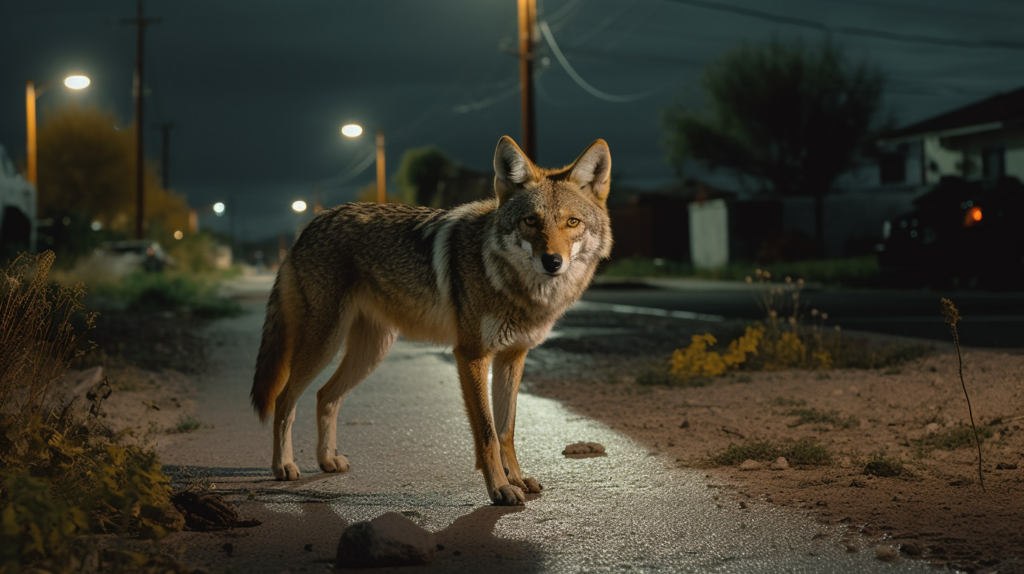
Coyotes Behavior in Urban and Suburban Environments
In urban and suburban areas, where scavenging opportunities are abundant, coyotes may alter their hunting strategies and rely more on human-generated food sources, such as garbage bins or pet food left outdoors. This can lead to increased activity during the day when these food sources are more accessible.
Furthermore, environmental conditions such as temperature and weather patterns can influence coyote behavior. In regions with scorching summers or bitter winters, coyotes may adjust their activity patterns to avoid extreme temperatures.
They may exhibit more nocturnal tendencies during the hot summer months, seeking cooler conditions, or increase their daytime activity during winter to conserve energy in the colder climate.
Understanding the intricate interplay of these factors provides valuable insights into the behavior of coyotes and their ability to adapt to diverse environments.
In the next section, we will explore where coyotes choose to sleep and rest, shedding light on their preferred locations for daytime repose.
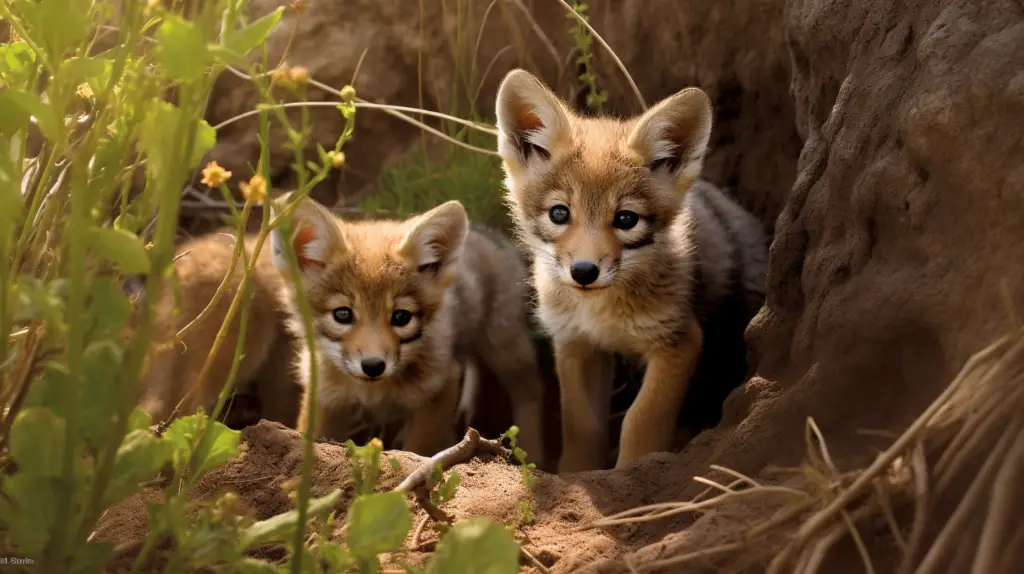
Where Do Coyotes Sleep?
Coyotes, like many other animals, require periods of rest and sleep to replenish their energy and ensure their overall well-being.
Understanding where coyotes choose to sleep provides insights into their behavior and preferred habitats. Let’s delve into their typical sleeping habits and the locations they prefer for slumber.
Coyotes are known for their adaptability and ability to utilize a variety of sleeping locations.
Their choice of sleeping spot depends on several factors, including safety, protection from predators, proximity to food sources, and shelter from the elements. Here are some common locations where coyotes tend to sleep:
Dens
Dens serve as essential shelters for coyotes, especially during the breeding season and when raising their young.
These dens can be found in natural formations like caves, hollow logs, or abandoned burrows created by other animals. Coyotes may also dig their own burrows in soft soil or find refuge in dense vegetation to create temporary dens.
Thickets and Brush Piles
Coyotes often seek out dense vegetation, such as thickets, brush piles, or overgrown areas, for daytime resting. These areas provide camouflage and concealment, offering protection from potential threats and reducing their visibility to other animals or humans.
Rocky Outcrops
Rocky areas or crevices within cliffs and boulders offer secure hideaways for coyotes. These locations provide natural protection and insulation, shielding them from extreme temperatures and potential predators.
Underground Burrows
In some cases, coyotes may repurpose or expand the burrows of other animals, such as ground-dwelling rodents, to create their sleeping quarters. These burrows provide insulation, protection, and a safe space for resting.
Human Structures
Coyotes may take advantage of human-made structures, including sheds, barns, or even the crawl spaces beneath houses, for sleeping during the day. These structures provide cover and protection from the elements.
So why do coyotes choose these particular locations for sleep? One primary reason is safety and protection.
Coyotes are aware of potential threats, including larger predators or human activity, and seek out areas that provide security and concealment. Their choice of sleeping locations allows them to minimize their exposure and remain undisturbed while resting.
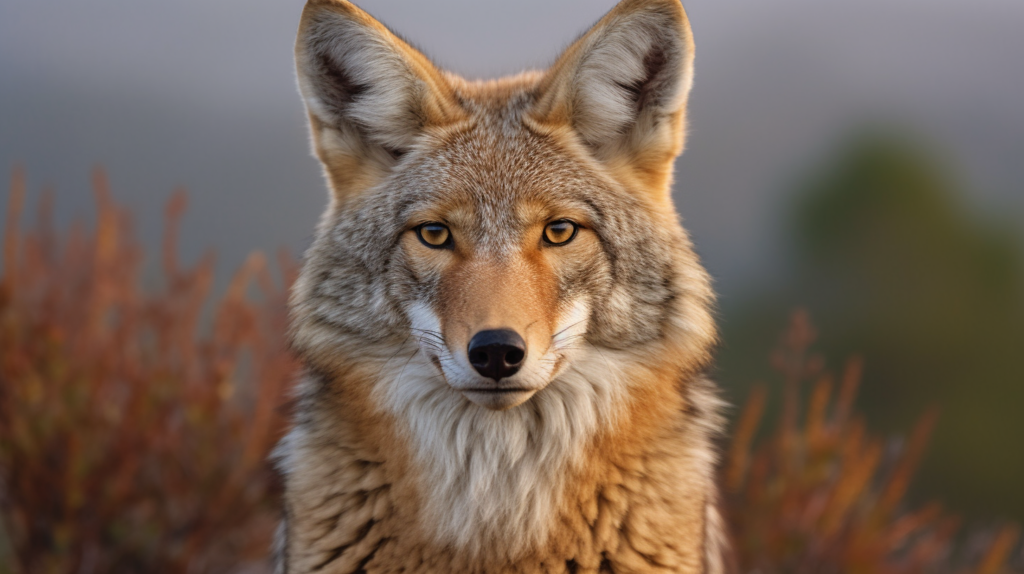
Proximity to Food Sources
Additionally, proximity to food sources is another important consideration. Coyotes are opportunistic hunters and scavengers, and they often select sleeping spots near areas where they can easily access prey or food remnants.
By choosing sleeping locations strategically, they can reduce the distance they need to travel for hunting or scavenging, conserving energy for their nighttime activities.
The specific sleeping habits and locations of coyotes may vary based on factors such as geographical region, habitat type, and availability of suitable options.
It’s important to note that coyotes are adaptable creatures and can adjust their sleeping patterns and locations based on environmental conditions, human presence, and other factors.
In the next section, we will explore the fascinating topic of coyote hunting behavior, including whether they hunt during the day and how they adapt their strategies based on various factors.
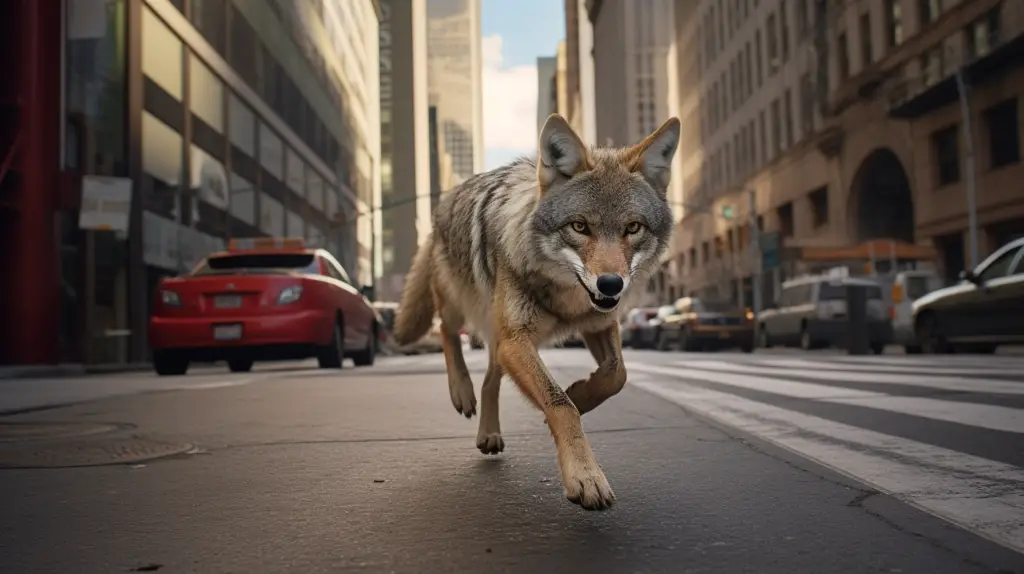
Do Coyotes Hunt During the Day?
Coyotes are highly adaptable predators with remarkable hunting skills. While they are often associated with nocturnal activity, coyotes are not limited to hunting exclusively during the night.
They display versatile hunting behavior, adjusting their strategies based on the time of day and various environmental factors. Let’s explore how they hunt and adapt their hunting patterns.
Coyotes are opportunistic hunters, meaning they exploit a wide range of food sources depending on availability.
Their diet primarily consists of small mammals, such as rodents, rabbits, and squirrels, but they are also known to consume birds, reptiles, amphibians, insects, fruits, and even carrion. Their ability to adapt their hunting behavior is crucial for survival in diverse habitats.
While coyotes do engage in hunting during the day, their preferred hunting periods are typically during twilight hours, specifically at dawn and dusk.
These times provide favorable lighting conditions, allowing coyotes to capitalize on reduced visibility for both stalking and ambushing their prey. The low light levels provide them with an advantage, as they can approach their targets without being easily detected.
Daytime Hunts
During the day, coyotes may engage in opportunistic hunting if suitable prey presents itself. For example, if they encounter a vulnerable or easily accessible food source, such as a rodent scurrying through open terrain, they may pursue it.
They can also take advantage of human-generated food sources, such as garbage bins or unattended pet food, especially in urban or suburban environments. In such cases, coyotes may exhibit bolder behavior and hunt during daylight hours when these resources are more readily available.
Coyotes are intelligent animals that continuously assess their surroundings and adapt their hunting strategies accordingly. They consider various factors when determining the timing and approach of their hunts.
These factors include prey behavior, seasonal variations, human activity levels, and even weather conditions.
Prey Behaviors
Prey behavior greatly influences coyote hunting patterns. For instance, if their primary prey, such as rodents or rabbits, exhibits more daytime activity due to specific feeding or breeding behaviors, they may increase their hunting efforts during daylight hours to capitalize on these opportunities.
Seasonal Variations
Seasonal variations also play a role in coyote hunting behavior. During the breeding season of certain prey species, such as ground-nesting birds or ungulates, coyotes may adjust their hunting patterns to target vulnerable offspring or exploit altered patterns of prey movement.
Human activity can influence when and how coyotes hunt. In areas with high human presence, coyotes may become more nocturnal or modify their hunting locations to avoid encounters or potential conflicts.
Conversely, in areas with less human disturbance, they may exhibit more diurnal hunting tendencies.
Furthermore, weather conditions, such as extreme temperatures or heavy snowfall, can impact coyote hunting behavior.
Coyotes may adjust their activity patterns to avoid unfavorable conditions or take advantage of specific weather events that affect prey behavior.
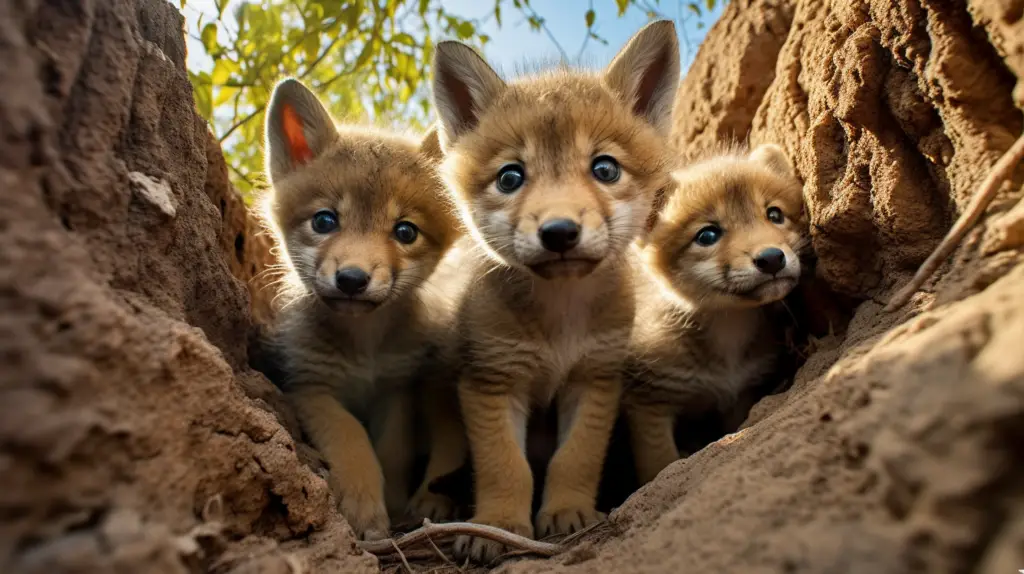
Twilight is Prime Coyote Activity Time
While coyotes are commonly associated with nocturnal activity, they are adaptable hunters that can adjust their strategies based on the time of day and various environmental factors.
Coyotes primarily exhibit crepuscular behavior, focusing their hunting efforts during twilight hours.
However, they are also capable of hunting during the day, particularly when presented with suitable opportunities or in urban environments where resources are more accessible.
In the next section, we will explore instances when coyotes are active during the day and discuss whether this behavior is considered normal for coyotes.
Coyotes Out During the Day: Is It Normal?
While coyotes are known for their crepuscular behavior, instances of daytime activity are not uncommon. Observing coyotes active during the day may raise questions about the normalcy of this behavior.
Let’s analyze the factors that contribute to coyotes being out during the day and discuss whether daytime activity is considered normal for coyotes.
Human Disturbance
Human activities and disturbances can influence coyote behavior. In urban or suburban areas where human presence is constant, coyotes may adjust their activity patterns to avoid encounters.
They may become more nocturnal, conducting most of their activities during the cover of darkness. In such cases, coyotes being out during the day could indicate increased tolerance to human presence or a response to specific disturbances.
Food Availability
Food sources can significantly impact coyote behavior. In environments where food is readily available during the day, such as in areas with abundant small mammal populations or access to human-generated food sources, coyotes may hunt or scavenge during daylight hours.
This behavior allows them to take advantage of available resources, reducing the need to search for food during twilight hours.
Breeding Season
During the breeding season, coyotes may exhibit increased daytime activity. Mating and raising their young require additional energy, leading to more frequent hunting or scavenging during the day to meet their nutritional needs.
Additionally, females may need to spend more time actively caring for and protecting their pups, necessitating increased hunting efforts during daylight hours.
Habitat and Prey Adaptation
Coyotes are adaptable animals that can adjust their behavior based on their habitat and available prey.
In certain environments or specific seasons, prey species may exhibit increased daytime activity due to their own behavioral adaptations or resource availability. This can influence coyote hunting patterns, leading to more frequent daytime hunting.
It is important to note that while daytime activity is not unusual for them, it should still be assessed in context.
Significant changes in activity patterns, such as an increase in consistent daytime activity or nocturnal behavior during periods of low human disturbance, could be indicative of disruptions in their natural behavior and habitat.
Coyotes’ ability to exhibit flexible activity patterns is a testament to their adaptability as a species.
Coyote behavior can vary across regions and individual populations, influenced by factors such as food availability, human interactions, and ecological dynamics.
As long as they are not displaying abnormal or distressed behavior, just by being out during the day can be considered within the range of normalcy for their species.
In the next section, we will explore the typical times when coyotes are most active, shedding light on their preferred periods of activity and the factors that influence their emergence.
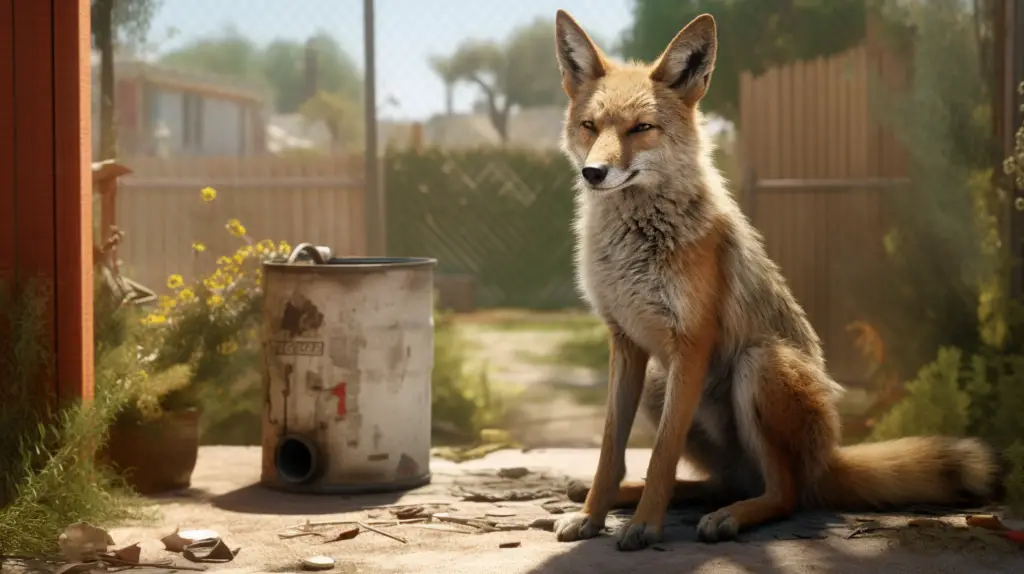
When Do Coyotes Come Out?
Understanding the typical times when coyotes are most active provides valuable insights into their behavior and helps us coexist peacefully with these fascinating creatures.
While coyotes are adaptable and can adjust their activity patterns based on various factors, there are certain preferred periods when they tend to be more active.
Let’s explore when coyotes come out and the factors that influence their emergence.
Coyotes are primarily crepuscular animals, meaning they are most active during the twilight hours of dawn and dusk.
These times offer optimal lighting conditions, allowing them to hunt and move with reduced visibility. During these periods, they take advantage of their acute senses, keen eyesight, and sharp hearing to stalk and capture their prey effectively.
Factors that influence when coyotes come out include:
Season
Seasonal variations play a role in coyote activity patterns. In general, coyotes tend to be more active during the cooler seasons of fall and winter.
The absence of dense foliage and reduced vegetation during these seasons provide better visibility and hunting opportunities for coyotes. However, they can still be active throughout the year, adapting their behavior to the specific conditions of each season.
Weather Conditions
Weather can impact coyote activity. Extreme temperatures, such as scorching summer heat or frigid winter cold, can reduce their activity levels.
During extremely hot or cold periods, coyotes may be more active during the early morning or late evening when temperatures are milder. Rain or heavy snowfall may also temporarily reduce their activity, although they can still be encountered during inclement weather.
Human Activity
Human presence and activity can influence when coyotes come out. In areas with high levels of human disturbance, such as busy urban centers or densely populated suburbs, coyotes may exhibit increased nocturnal behavior to avoid encounters with humans.
They may adjust their activity patterns to minimize interactions and conflicts. In contrast, in areas with low human disturbance, such as remote or less populated regions, coyotes may exhibit more diurnal activity.
Food Availability
Coyotes are opportunistic feeders and will adjust their activity patterns based on the availability of food sources. If their primary prey species are more active during the day or if there are accessible human-generated food sources, they may exhibit increased daytime activity to capitalize on these resources.
It’s important to note that while there are typical patterns of coyote activity, individual behavior can vary. Factors such as population density, habitat type, and local conditions can influence when coyotes are most active in specific areas.
Final Call
Coyotes, with their adaptable nature, exhibit a range of behaviors in response to various factors.
While they are often active during the twilight hours of dawn and dusk, they can also be out during the day, especially in areas with suitable food sources and less human disturbance.
Understanding coyote behavior is crucial for peaceful coexistence, allowing us to appreciate their presence while taking necessary precautions to mitigate potential conflicts.
Remember, observing coyotes from a distance and refraining from feeding or approaching them is essential for their safety and ours. By respecting their presence and creating a harmonious balance, we can share our environments with these remarkable creatures.
- Sink Your Teeth Into This: Analyzing the Powerful Lion Bite Force - September 8, 2023
- Siberian Tigers: Everything You Need To Know - September 4, 2023
- Do Lions Eat Humans? Understanding Lion Aggression and Risks - September 4, 2023

